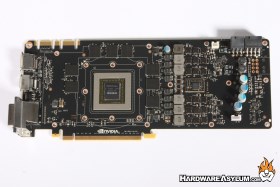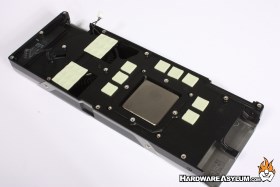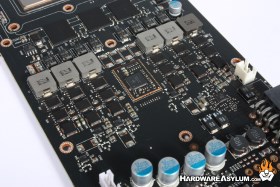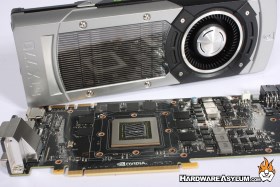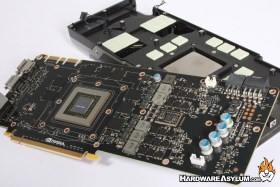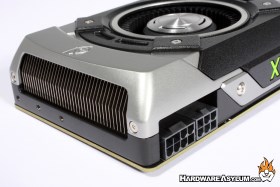NVidia GTX 770 Video Card Review
Author: Dennis Garcia
Published: Thursday, May 30, 2013
Card Uncovered
There are a handful of screws holding the custom heatink to the GTX 770 PCB and removing them all will release the cooler from the card. With the cooler removed you can clearly see the tiny GTX 770 GPU surrounded by memory chips in the typical ring configuration.
Unlike some aftermarket cooling solutions this cooler makes contact with every single heatsource from the GPU on a dedicated cooling pad to the memory and pwm. Both of these are on a dedicated heat spreader so to not get saturated by the GPU.
For those wishing to watercool it might be best to look for a full card cooler and given that the PCBs are similar all the way up to Titan there should be a good number to choose from.
For those wishing to watercool it might be best to look for a full card cooler and given that the PCBs are similar all the way up to Titan there should be a good number to choose from.
One of the factors that limited how much the previous GTX 680 could be overclocked was the size of the reference PWM. Due to the lower power requirements Nvidia determined that a 4-phase design would be enough to drive the card and still remain stable. Hot-clocked designs often featured 5-phase PWMs or even replaced it entirely like on the MSI 680 Lightning and EVGA 680 Classified.
The reference design GTX 770 features a 6-phase PWM to support the higher frequencies and GPU Boost 2.0 features. Extreme overclockers may not like this, but that is why aftermarket designs exist.
The reference design GTX 770 features a 6-phase PWM to support the higher frequencies and GPU Boost 2.0 features. Extreme overclockers may not like this, but that is why aftermarket designs exist.
The Nvidia power configuration for the GTX 770 is a 8pin + 6pin power configuration and they recommend a 600w PSU for stability. The stock cooler is an external venting design that pulls from the primary squirrel fan and slightly from this rear facing vent. We're still trying to figure out how that works, but it does.

